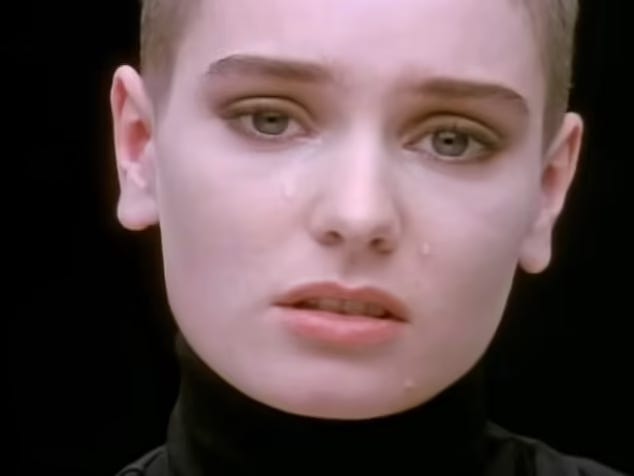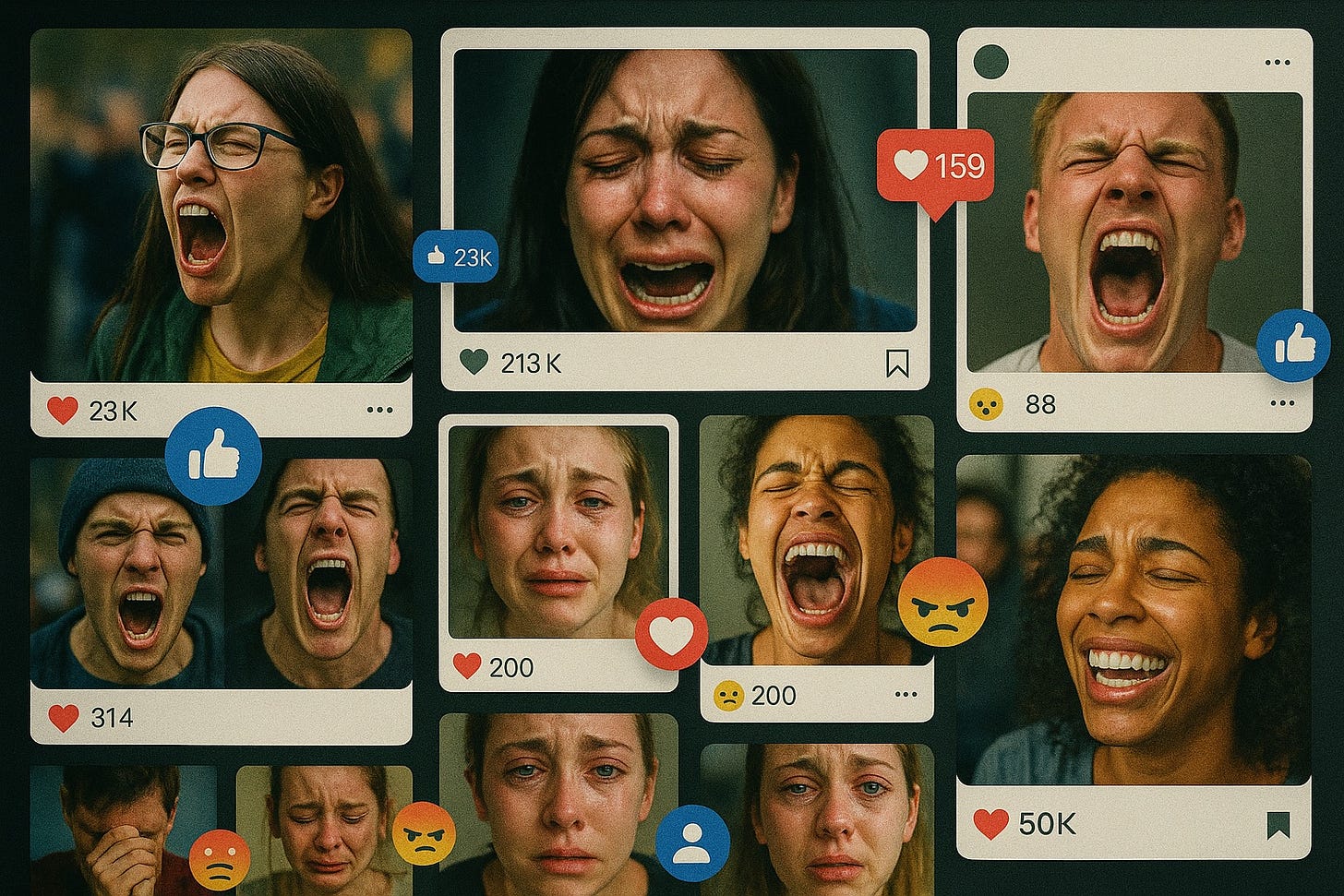The age of curated emotion
Social media has turned feeling into spectacle and empathy into content.
Those of us who are guilty of ‘doomscrolling’ through social media as a work-avoidance tactic will have noticed the frequency of a certain species of video. It consists of a young person extemporising on a political subject in an ostensibly heightened state of emotion. Whether they’re wailing about Trump’s policies, seething about the lack of ‘nonbinary’ acceptance, or dancing for joy over the murder of their political opponents, the most consistent quality of these clips is one of inauthenticity.
It’s an odd phenomenon. Emotions that we all know to be spontaneous are somehow being planned and performed. I recall seeing one young man calmly and dutifully positioning his iPhone to ensure he was in shot before launching into a hysterical breakdown over some minor ideological gripe. Then there have been the numerous ‘scream-ins’, where activists gather to shriek as a form of protest. The most famous example was probably the ‘Luke Crywalker’ meme, in which a woman was seen waiting for the announcement of Donald Trump’s inauguration before unleashing a rehearsed primal howl.
This trend of young people feigning emotions is no doubt connected to the commodification of the self in the social media age. I am no digital anthropologist, so much of what I say here will be speculative, but I cannot help but wonder whether these eerily disembodied and affective displays are suggestive of a form of emotional numbing.
Let’s consider a comparison from before and after the advent of social media. In the video for her version of Prince’s ‘Nothing Compares 2 U’, Sinéad O’Connor famously broke down into tears. The crying was authentic because she was thinking of her recently deceased mother at the time. Most of the video is a single tight close-up of her face, accentuating the poignancy. Over two decades later, Miley Cyrus borrowed this aesthetic in her video for ‘Wrecking Ball’. It begins with a similar close-up, and she is crying immediately. But tears seem simulated. This is choreographed sorrow, not the real thing.


The contrast can perhaps be explained by the way in which social media has encouraged emotional display as a form of branding. Fans of Miley Cyrus are unlikely to be put off by the artifice, because they are accustomed to emotion that has been deliberately constructed for clicks, and they might even find it more impressive than O’Connor’s raw grief captured unexpectedly on camera.
I am aware that I am wading into quagmires of cod-psychology that I am by no means qualified to traverse, and so I will defer to the expertise of those who have spent their professional lives studying the phenomena. Apparently, one aspect of both psychopathy and sociopathy is the mimicking of emotional states that the subject cannot feel. To compensate for a lack of genuine feeling, they learn to perform emotional routines and expressions. Might this explain the outpouring of fabricated tears and the endless staged tantrums that we see online every day?
Research by psychologist Angela Book found that psychopaths are adept at displaying false emotions so believably that observers think the feelings are real. Rather alarmingly, studies show that the fake fear and remorse on display can often appear more genuine to others than the actual emotions of non-psychopathic people.
— To continue reading this article, please consider becoming a paid subscriber —
Keep reading with a 7-day free trial
Subscribe to Andrew Doyle to keep reading this post and get 7 days of free access to the full post archives.


